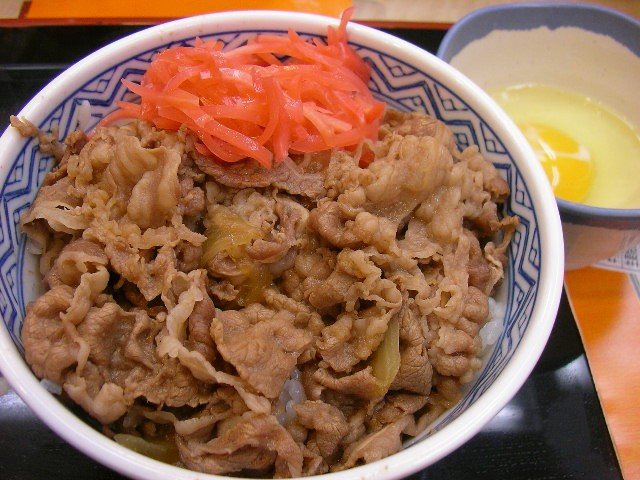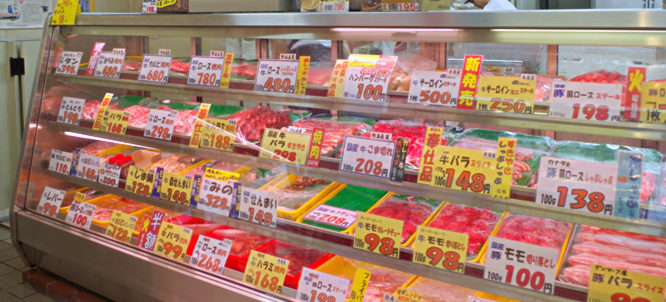The media often show exorbitant prices for meats of Japanese origin, and we already know that the daily consumption of beef in Japan is not common. These and other factors make people think that meat in Japan is absurdly expensive, which is why the Japanese don't eat much meat. But is it really true? Do Japanese people really not eat meat because it is so expensive? How much does meat cost in Japan? In this article, we will answer this and other questions.
People think that just because Japan is small, it has the most expensive meat in the world. It is logical that meat in Japan has a higher price than in Brazil, but it is worth remembering that in several countries such as Canada, meat costs much more than in Japan or Brazil.
Table of Content
Meat in Japan
Japan is famous for having some of the best and most expensive premium meat in the world, like kobe beef. Because of this meat, people think that all meats in Japan cost 200 reais per kilo. Anywhere in the world, this meat will indeed cost a fortune, but how much do common beef, pork, and poultry cost in Japan?
We don't need to talk about fish, because everyone knows that fish and seafood are part of Japanese cuisine. But it is wrong to imagine that Japanese eat only fish. I stayed in Japan for 30 days and only ate fish twice.
I was completely lost with the immense variety of food in Japan. Daily consumption of beef in large quantities is not common, but they use a lot of poultry and pork in most of their recipes.

The price is not one of the main reasons for the low number of meat sales in Japan. Most Japanese people have lunch outside in restaurants or buy a bento, giving them the opportunity to try various different dishes every day. If a Japanese person wants, they can eat a gyudon (a dish covered with meat) every day, or a udon/soba with meat.
There is no such idea that if you go to Japan you won't eat meat. Meat is very affordable in Japan! I went to a Yakiniku, a restaurant where you pay 1,000 yen (30 reais) to spend 2 hours eating meat and various other foods, a kind of carvery. During my trip I witnessed several barbecues being done by Brazilians.
The simple fact that the Japanese do not consume meat like we Brazilians is because there is no need, Japanese cuisine is too rich and diverse to need to consume a lot of meat every day.

How much is Meat in Japan?
Meat in Japan is not sold by the kilo but by 100 grams, which usually cost between 90 and 500 yen, but can exceed this value depending on the meat. As in Brazil, pork and poultry is cheaper.
Therefore, it is possible to buy chicken or pork meat with prices between 30 to 10 USD per kilo. Beef you can find from 10 USD a kilo.
The cuts of meat in Japan are also different, the Japanese tend to use all the meat, which is usually sold chopped or in trays. Meat being sold by 100 grams does not mean that it is rarely consumed, absolutely almost everything in Japan is sold in small quantities, all this because people eat more outside.
Another common thing is the mixing of beef and pork in products such as ground beef. To better understand the price of meats, see the image below:

Is meat in Japan expensive and under-consumed?
It seems expensive for the Brazilian pocket, but it is a totally affordable value for the Japanese pocket. If we take the minimum wage in Japan, which is between 150,000 to 300,000 yen (4 to 9 thousand reais), we will spend much less on meat than in Brazil where the salary is in the range of 1,000 reais. Would you rather earn 5,000 and pay 60 reais for a kilo of meat, or earn 1,000 and pay 20?
It is worth remembering that meat exported from other countries to Japan is usually much cheaper than meat produced in Japan, which can exceed 1,000 yen per 100 grams. This is the main reason people think that meat in Japan is very expensive.
Meat is widely used in Japanese cuisine, yes, it is just not consumed as in other countries, where you have a plate full of rice and 3 steaks of meat. The meat is used in recipes like gyudon which is very popular in Japan.

In my opinion and experience I had in Japan, I ate more recipes that had meat than fish. Among the recipes I tried, I would like to highlight:
- Nikuman - Boiled cake stuffed with meat.
- Gyudon - Rice with meat.
- Niku udon - Udon with meat;
- Niku soba - Soba with meat;
- Yakitori - Chicken or poultry meat skewer.
- Tonkatsu - breaded pork.
- Gyoza, yakisoba and several other recipes contain meat;
Thus, we can conclude that:
- Meat in Japan is cheaper than in many countries;
- The Japanese salary is more than enough to consume meat daily;
- The Japanese have the custom of eating in restaurants or buying lunch boxes;
- The Japanese have the opportunity to consume several meat dishes every day;
- Meat imported into Japan is cheaper than Japanese meat;
- Meat is sold by the weight of 100 grams instead of kilograms;
- The meat is widely used in Japanese recipes;
Name of Meat in Japanese
Below we have a list with the names of the main cuts of meat in japonês. If you want to see more colors, we recommend our article with the types of meats and fish in japonês.
Responsive Table: Scroll the table to the side with your finger >>
| Chuck roast | 肩ロース | kata roosu |
| Meat around the rib | バラ | bara |
| sirloin fillet | サーロイン | saaroin |
| Rib and rib fillet | リブロース | ribu roosu |
| Needle point rib | 骨付バラ肉 | honetsuki baraniku |
| hard thigh | 外もも | sotomomo |
| soft thigh | 内もも | uchimomo |
| Termite | コブ肉 | kobu niku |
| Filet mignon | ヒレ | hire |
| Rump brains | ランプ | ranpu |
| Muscle | すね | sune |
| duckling and titty | しんたま | shintama |
| Little fish | ミスジ | misuji |
| Neck | ネック | necku |
| Rump steak | イチボ | ichibo |
| Tail | テール | teeru |
| Racket | トンビ | tobi |
